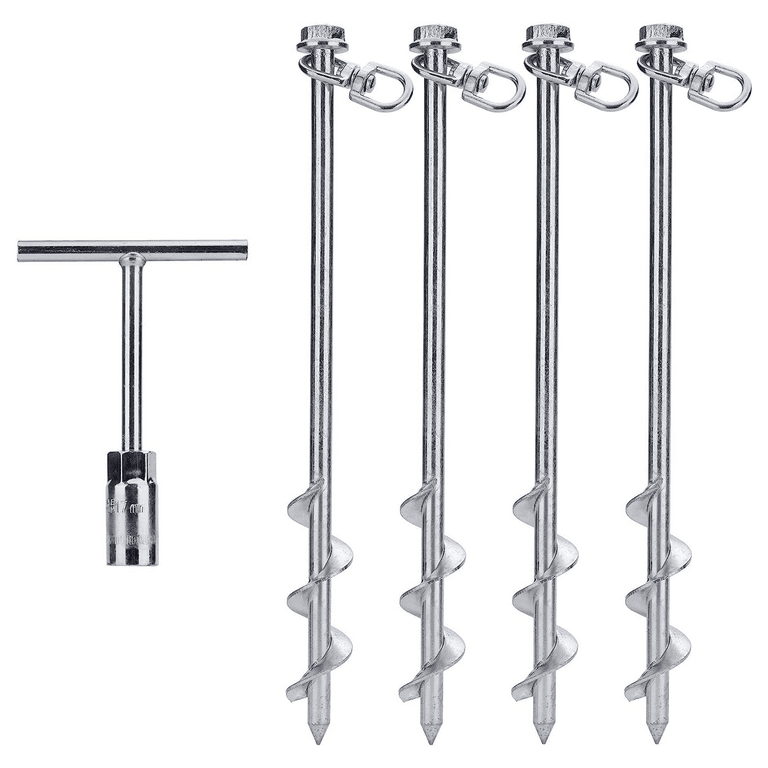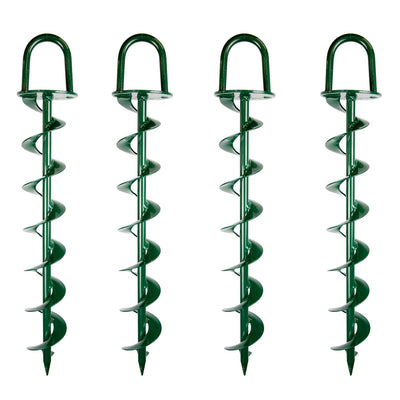Comparing Various Ground Anchor Models to Discover the Best Option for Your Needs
Comparing Various Ground Anchor Models to Discover the Best Option for Your Needs
Blog Article
Explore the Different Kinds Of Ground Support for Your Next Task
When starting a construction or landscape design project, understanding the numerous types of ground anchors available is critical to guaranteeing both stability and durability (Ground Anchor). From auger anchors, which excel in varied soil conditions, to stake anchors created for short-term installments, the options are numerous. Furthermore, concrete and screw anchors present special benefits in details circumstances, while deadman anchors are tailored for applications calling for resistance to lateral pressures. The option of a proper support kind can significantly affect the overall success of your job, triggering additional expedition into their respective advantages and applications.

Auger Anchors
Auger supports are a preferred option in various building and construction and landscape design jobs due to their distinct layout and efficient securing capabilities. These supports contain a helical screw-like shaft that is driven into the ground, enabling for a safe and secure and secure hold. The spiral style promotes very easy installation and takes full advantage of resistance against side forces, making auger anchors specifically efficient in applications such as fencing, short-term frameworks, and erosion control.
The installation procedure of auger anchors is fairly simple. They can be by hand or mechanically mounted, depending upon the dimension and called for deepness. This versatility permits for their usage in diverse dirt conditions, from sandy to clayey terrains. Furthermore, auger anchors can be conveniently removed and recycled, which includes in their cost-effectiveness and sustainability.
Among the considerable advantages of auger anchors is their ability to distribute tons uniformly throughout the bordering dirt, lowering the threat of soil disturbance and lessening ecological influence. Additionally, they are less vulnerable to loosening or heaving over time compared to traditional securing techniques. As a result, auger supports are an exceptional choice for tasks needing long lasting and trustworthy anchoring remedies.

Risk Anchors
When it comes to securing frameworks in a variety of outside applications, risk supports use a trusted and straightforward solution. These supports are commonly created from durable materials such as steel or aluminum, created to stand up to environmental anxieties while giving optimal security. Their straightforward style enables quick setup, making them an ideal choice for momentary or irreversible anchoring demands.
Stake supports are specifically useful in securing camping tents, canopies, and various other lightweight frameworks against wind and climate. They work by being driven into the ground at an angle, developing a solid hold that withstands pull-out forces - Ground Anchor. The effectiveness of risk anchors depends upon several variables, including dirt type, moisture material, and the angle of installment
For added security, several stake supports come with accessory factors for ropes or straps, enabling tension changes as required. In applications such as landscaping or building and construction, they can efficiently stabilize equipment or structures on unequal surface. Generally, risk supports offer a functional and economical solution for safeguarding various outdoor installations, making them a favored choice for contractors and do it yourself enthusiasts alike.
Concrete Anchors
Concrete supports supply a durable remedy for protecting structures to concrete surface areas, ensuring stability and safety in different applications. These anchors are vital for tasks ranging from residential building and constructions to massive industrial installations. They come in various kinds, including expansion supports, adhesive supports, and undercut anchors, each designed for details lots needs and ecological problems.
When installed,Expansion anchors rely on mechanical systems to grip the concrete. They are ideal for medium to durable applications. Sticky anchors use high-strength epoxy or resin to bond the support to the concrete, providing exceptional load-bearing capabilities, especially in cracked concrete scenarios. Undercut anchors develop an unique form within the concrete, giving outstanding holding power, particularly in applications where tensile tons prevail.
When carried out properly, concrete supports substantially enhance the structural honesty of different projects, making them essential in modern building techniques. Recognizing additional info the details demands of your job will certainly help in selecting the right kind of concrete support for the task.
Screw Anchors

Screw anchors are a versatile fastening option that can be effectively employed in a range of applications where standard concrete look at these guys anchors may not be adequate. These supports consist of a helical style that permits them to be quickly driven into the ground, making them optimal for usage in dirt and other substrates. Their unique structure provides superb holding power and resistance to pull-out pressures, making them suitable for numerous tasks, from landscape design to architectural support.
One of the primary advantages of screw anchors is their ease of installment. They need minimal equipment and can frequently be installed without the demand for excavation, which conserves both time and labor expenses. Additionally, screw supports can be eliminated and reused, supplying a lasting service for short-lived applications.
Screw anchors are particularly useful in areas where dirt conditions are challenging, such as loose or sandy soils. Their capability to be set up at varying midsts enables customization based upon specific job needs. On the whole, screw anchors give a reliable and reliable anchoring approach, making them an excellent option for contractors and designers looking for efficient remedies for their tasks.
Deadman Anchors
Deadman anchors work as a durable service for supporting frameworks in difficult conditions, particularly where standard securing approaches may fail. These anchors contain huge, heavy items buried underground, which develop resistance versus side forces. The style usually entails a straight component, such as a block of concrete or a steel plate, buried in the soil, to which wires or straps are connected.
The performance of deadman supports hinges on their capacity to distribute tons over a larger area, lowering the threat of failure in unstable dirt conditions. why not try these out They are particularly useful in applications such as preserving wall surfaces, short-lived structures, and slope stablizing, where dirt movement can compromise the stability of the framework.
Installment of deadman anchors requires cautious planning to ensure they are positioned at the proper depth and alignment, maximizing their load-bearing ability. While they may need more labor and material than lightweight supports, their dependability in adverse problems makes them vital for long-term projects. Deadman supports are functional and can be adapted to various applications, making them a best choice for designers facing special challenges in their tasks.
Verdict
In summary, selecting the suitable sort of ground support is vital for making certain stability and safety and security in different jobs. Auger anchors master varied dirt problems, while stake anchors match temporary applications. For concrete surfaces, expansion and sticky anchors give reliable options, and screw anchors offer versatility in difficult terrains. Deadman anchors are particularly efficient in resisting side forces for retaining wall surfaces. Cautious factor to consider of these alternatives will certainly enhance project results and architectural stability.
Furthermore, concrete and screw anchors present special benefits in certain scenarios, while deadman anchors are tailored for applications calling for resistance to side forces - Ground Anchor.Auger supports are a prominent selection in different building and construction and landscape design jobs due to their distinct style and efficient securing abilities. They come in different kinds, consisting of development anchors, glue anchors, and undercut anchors, each designed for details tons requirements and environmental conditions
Glue anchors make use of high-strength epoxy or material to bond the support to the concrete, offering exceptional load-bearing capacities, specifically in broken concrete circumstances. Generally, screw anchors supply a dependable and efficient securing approach, making them a superb choice for engineers and professionals seeking effective remedies for their tasks.
Report this page